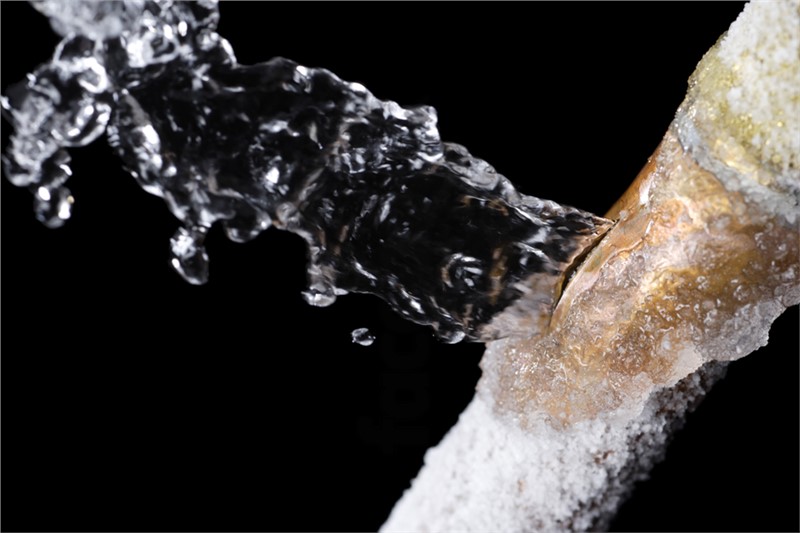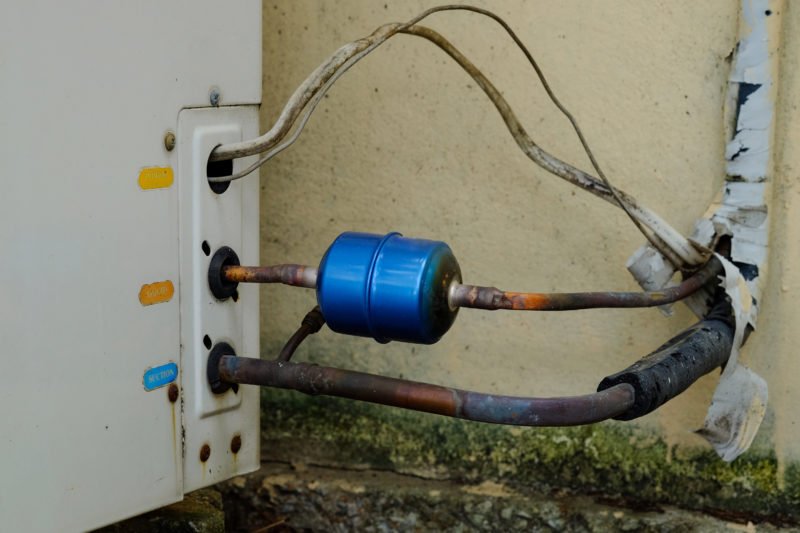Icy Air Conditioner Pipe - Causes and Ways to Resolve the Problem
Icy Air Conditioner Pipe - Causes and Ways to Resolve the Problem
Blog Article
Are you trying to locate critical info concerning What Causes AC Pipes To Freeze??

Intro
Uncovering that your AC pipe is iced up can be concerning, particularly throughout warm summer season when you depend on your air conditioning unit the most. Understanding what to do in such a scenario is vital to avoid more damage to your cooling system and guarantee your comfort inside your home.
Comprehending the Causes
Numerous factors can add to the cold of an a/c pipeline. Understanding these causes can assist you address the issue effectively.
Lack of Airflow
One usual source of a frozen air conditioner pipe is inadequate air flow. When the airflow over the evaporator coil is restricted, it can cause the coil to go down below freezing temperature level, bring about ice development on the pipeline.
Reduced Refrigerant Levels
Inadequate refrigerant degrees in your a/c system can additionally result in a frozen pipe. Low cooling agent degrees can trigger the stress in the system to go down, bring about the cold of dampness on the evaporator coil.
Cold Weather Conditions
In chillier environments, freezing temperatures outside can contribute to the freezing of air conditioning pipelines. If your air conditioner device is not properly shielded or if there are leakages in the ductwork, cold air can penetrate the system, causing the pipe to freeze.
Dirty Air Filters
Filthy or stopped up air filters can limit air movement in your AC system, leading to various problems, including a frozen pipe. It's vital to change or cleanse your air filterings system regularly to make sure correct air flow and prevent ice build-up.
Indicators of a Frozen A/c Pipe
Recognizing the indications of an icy a/c pipeline is critical for punctual action.
Decreased Airflow
If you discover a significant reduction in air movement from your vents, it might show a frozen pipeline.
Ice Buildup on the Pipe
Visible ice buildup on the refrigerant line or the evaporator coil is a clear sign of a frozen AC pipe.
Weird Sounds from the Unit
Unusual sounds, such as hissing or bubbling, originating from your air conditioner device can signal that there's ice existing on the pipeline.
Immediate Actions to Take
When faced with a frozen AC pipeline, it's important to act rapidly to avoid more damage to your air conditioning system.
Turning off the a/c
The initial step is to turn off your air conditioning system to avoid the system from running and intensifying the problem.
Looking for Blockages
Evaluate the area around the interior unit for any obstructions that might be blocking air flow, such as furniture or curtains.
Defrosting the Pipe
You can use mild techniques like placing towels soaked in cozy water around the frozen pipeline to help thaw it slowly.
Preventive Measures
Taking safety nets can assist prevent future occurrences of a frozen a/c pipe.
Regular Maintenance Checks
Arrange routine maintenance consult an expert HVAC service technician to guarantee that your a/c system is running efficiently.
Changing Air Filters
Consistently replace or clean your air filters to avoid airflow limitations and keep optimum efficiency.
Shielding Exposed Pipes
If your air conditioning pipelines are exposed to chilly temperatures, take into consideration protecting them to stop freezing throughout winter season.
Seeking Professional Help
If DIY methods stop working to resolve the concern or if you're unsure concerning exactly how to continue, it's finest to look for assistance from a qualified HVAC specialist.
When DIY Methods Fail
If your efforts to thaw the pipeline or address various other issues are unsuccessful, it's time to contact a professional.
Relevance of Hiring a Professional HVAC Technician
A certified HVAC specialist has the experience and devices essential to identify and fix concerns with your air conditioner system safely and effectively.
Conclusion
Dealing with a frozen air conditioner pipeline can be an aggravating experience, yet understanding just how to react can help minimize damage and bring back convenience to your home. By comprehending the reasons, acknowledging the indications, and taking prompt action, you can efficiently attend to the problem and prevent future events.
G UP? HOW TO FIX IT?
It happens all over America. And the rest of the world probably. It’s the hottest day ever and for some darn reason your AC isn’t cooling the house. You fiddle with the thermostat to try and fix the problem. Nada. All you can do now is go outside and check the AC unit. You make your way there and find your air conditioner unit is frozen! But how?
In this post we’ll cover how you can tell that your air conditioner has frozen (other than the obvious reasons), what could have caused the freeze, and some of the things you can do about your AC freezing up. And if you have a frozen heat pump condenser, read our blog about it to learn what to do! But remember, it is always best to avoid your AC freezing up with an AC tune up. And if you are moving into a home, it's critical to get HVAC inspection so that you are aware of an AC problems before you move in.
Keep reading and you may be able to fix the frozen AC yourself. If you can’t, call an HVAC specialist. If you live in Maryland, call SuperTech HVAC for AC repair. We’ll take care of it.
How Does An Air Conditioning Unit Work?
How you probably imagine an AC works is wrong. Contrary to popular belief, an AC system does not inject cool air into a building. Instead, it removes the heat from inside and transfers it outside. Cool huh? (Pun intended).There are 4 major components among the 3 stations of an air conditioning system: the evaporator coil, the compressor, the condenser, and the refrigerant – a special chemical that links everything together through a closed loop system.
Station 1:
Warm indoor air is sucked into the return vent, through a filter, and blows over the evaporator coil. The heat is absorbed into the cold refrigerant, turning it from liquid to gas. The air, which is now cool, is blown back into the home to areas that your thermostat, i.e. you, has decided.
Station 2:
The refrigerant makes its way outside the house to the compressor, which squeezes the warm refrigerant, raising its gaseous temperature even more.
Station 3:
When the super hot vapor refrigerant reaches the condenser, the last step, the heat is expelled and absorbed into the outdoor air. The refrigerant instantly cools, which changes it from gas back to liquid form. The cold liquid refrigerant is now ready to return to station 1 and repeat the process.
Is Your AC Freezing Up? Here Are The Signs:
As you may have guessed, your air conditioner unit freezing up on a hot day is not normal.
If this happens, there's no need to panic. Often the issue can be solved with a little troubleshooting. If the AC unit is left frozen for too long however, you may find yourself with a bigger problem.
First things first, how do you know your AC is frozen?
Well, the obvious sign is the ice on your refrigerant line-set pipe. Simply check between your outdoor AC unit and your home's exterior wall to see whether your AC line frozen.
You might also have a frozen evaporator coil. This one's not as easy to check. You'll need to open a panel on the indoor unit to inspect. Don't do this unless you're handy. If you aren't, call an HVAC pro like SuperTech HVAC or you may damage something in the process.

Do you enjoy reading up on Why Is Ice On My Outside Air Conditione? Post a review down the page. We will be glad to know your feelings about this posting. Hoping that you visit us again later on. Enjoyed reading our piece of writing? Please share it. Help another person discover it. Bless you for your time. Come back soon.
Course Detail Report this page